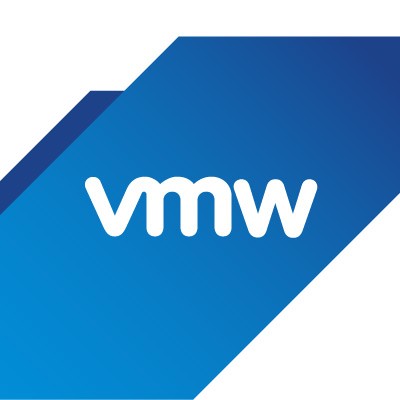Be ready for your job hunt and VMware interviews with ease. Book a mentorship today with a past or present VMware employee and get a head-start with realistic mock interviews!


Offered by Kashyap Bhansali
In this session, I will help you gauge the level of your coding interview preparation. Share feedback with you that will help you improve not … Read More
Don't leave getting your dream job to chance. Drastically improve your interview performance with a mentor from VMware.
Interview questions aren't always fair. The best thing you can do is prepare for them. Get the inside scoop on current interview questions from current VMware employees.
Technical interviews often ask for very specific skills. Get help from a VMware expert to hone your skills and get the job.
Way better than yet another coding exercise. Get detailed feedback on your interview performance from an industry expert.
Practice makes perfect. Get a real life mock interview with a VMware expert and get the job.
VMware experts are available at affordable rates. Get the help you need to get the job without breaking the bank.
Get continued career coaching services from a VMware employee. Get help as you enter your new job and beyond.
Get the inside scoop on current VMware interview questions. Prepare for your interview with a few select questions you might face.
Installing a guest operating system on VMware involves a series of steps. First, you need to create a new virtual machine, which you can do from the File option in the VMware console. During this process, you'll specify the type of operating system you're installing, which helps VMware optimize its settings for that OS.
Next, you allocate resources to your VM. You decide how much disk space, how many cores, and what amount of RAM you want to assign to this virtual machine based on the requirements of the OS and the applications you plan to run.
After this, you'll need to mount the installation media for the guest operating system. This can be in the form of an ISO file or a physical CD/DVD if your server has a drive. You'll then power on the VM, and it boots from the mounted installation media, after which you proceed through the OS installation process as you would on a physical machine. Once the installation is complete, you can install VMware Tools, which improves performance and interaction between the host and guest systems.
It's worth noting that although these general steps suit most scenarios, specific guest operating systems might have unique installation guidelines. It's often best to refer to the official VMware documentation or the relevant guides when installing different guest operating systems.
Monitoring resources in a VMware environment is vital for maintaining optimal system performance and ensuring effective virtual machine operation. VMware offers a variety of tools and features for monitoring resource usage.
One of the most commonly used tools is vCenter, which provides a centralized platform for managing VMware vSphere environments. It can keep tabs on CPU usage, memory utilization, network throughput, and disk I/O operations in real time. Its performance charts are quite useful in visualizing the use of resources over a snapshot of time.
You can also set up alarms in vCenter to notify you when certain performance metrics cross defined thresholds. It allows you to intervene promptly when resources are running low or when there is an unusual spike in utilization.
Another powerful tool is ESXTOP, a command-line utility that provides detailed, granular performance data in real time. It can be used directly on any ESXi host for a more focused, in-depth view, effectively working as a real-time diagnostic tool.
While these tools are capable individually, the utilization of a combination of them often provides a comprehensive look at a VMware environment's resource usage.
In VMware, a snapshot is a feature that captures the state and data of a virtual machine at a specific point in time. This includes the virtual machine settings, the state of all the disks, and the contents of the memory. Think of it as a 'time machine' that lets you travel back to the moment when the snapshot was taken.
Snapshots are incredibly useful in various situations like before applying patches or system updates, or before making any significant changes to the system. If anything goes wrong, you can revert to the snapshot, and return your VM to the exact state it was in when the snapshot was created.
While snapshots are a powerful tool, they aren't a replacement for proper backups. They are stored in the same data store as the original VM and share the same fate in case of datastore failures. Also, over-reliance on snapshots can lead to performance degradation, as it takes additional resources to maintain and run VMs from snapshots. That's why it's generally recommended to delete old snapshots after you've confirmed the system is running as expected.
In a previous role, we faced a critical issue where some of our most crucial virtual machines were randomly losing network connectivity. The problem wasn’t constant and seemed to resurface every few hours. As these VMs were hosting vital services, the issue was causing significant disruptions.
Comprehensive checks of the physical network and individual VM configurations returned nothing out of the ordinary. After delving deeper into VMware’s networking setup, I noticed that the number of used ports in the virtual switch was reaching its maximum limit intermittently.
I did some research and understood that the Ethernet adapters in the VMs were set to Policy "Default", which means a new port ID is assigned every time a VM is powered on or migrated through vMotion. Since our environment was quite dynamic with VMs frequently powered on/off and migrated, we were exhausting the default number of ports on the virtual switch.
I remedied the situation by increasing the maximum port limit on the vSwitch and modifying the port allocation policy to “Static”, which causes the VM to keep the same port ID even after migrations or reboots. The random connectivity issue immediately ceased. This was a solid learning experience, emphasizing how even overlooked properties can have significant impact in a virtualized environment.
VMware is a leading software company in the field of cloud computing and platform virtualization, basically creating a bridge between hardware resources and the operating system. At its core, VMware enables the creation of multiple virtual machines, each of which can run different operating systems, on a single physical device. This is advantageous as it makes optimal use of system resources, improves scalability, and increases efficiency. Another primary function of VMware is to provide a platform for migrating systems. With VMware’s vMotion, you can switch a virtual machine from one physical server to another without interruption. Also, VMware enables disaster recovery through its Site Recovery Manager (SRM), safeguarding against system faults and failures. VMware offers a broad range of products and services, including networking and security, storage and availability, data center and cloud infrastructure, and more.
We've already delivered 1-on-1 mentorship to thousands of students, professionals, managers and executives. Even better, they've left an average rating of 4.9 out of 5 for our mentors.
Book a VMware mock interview